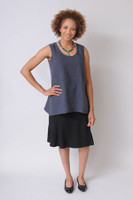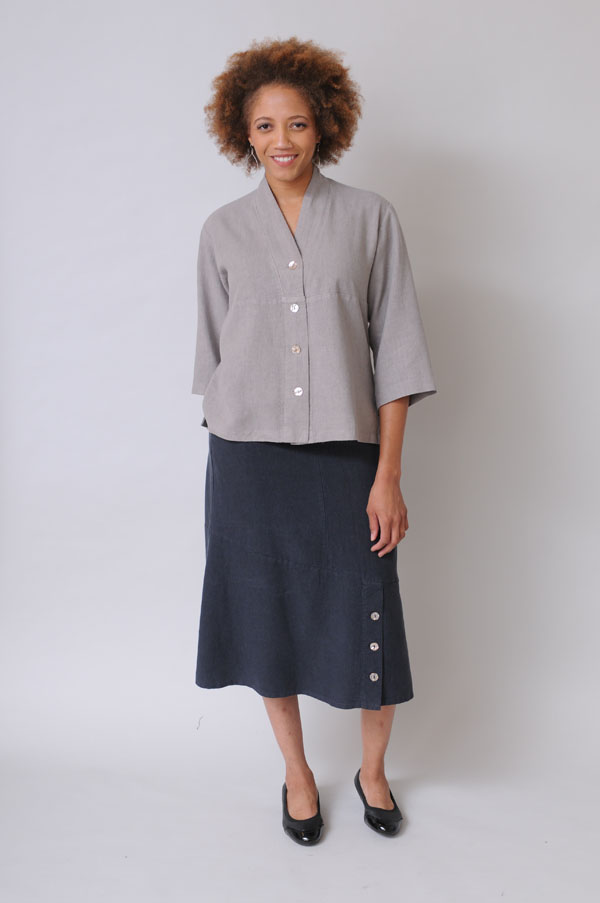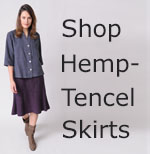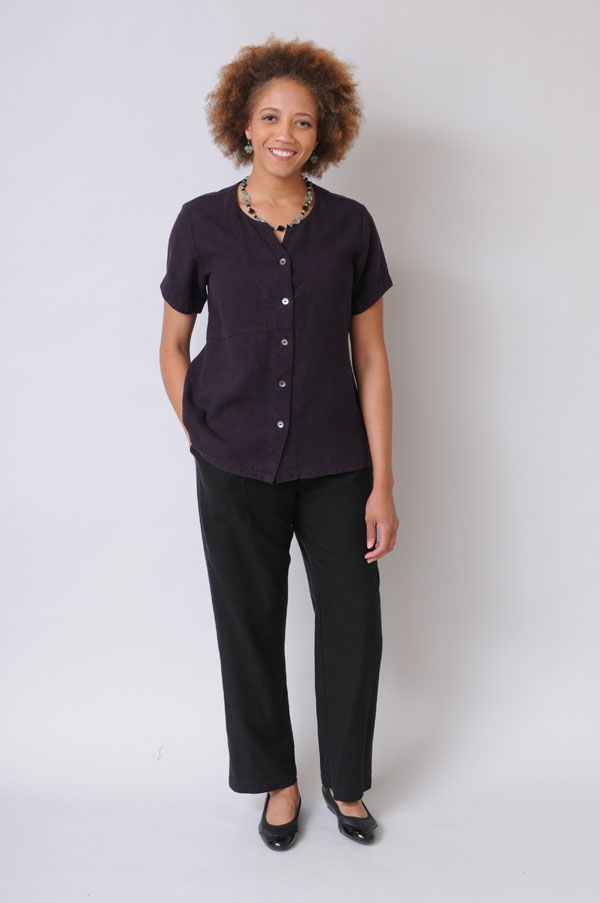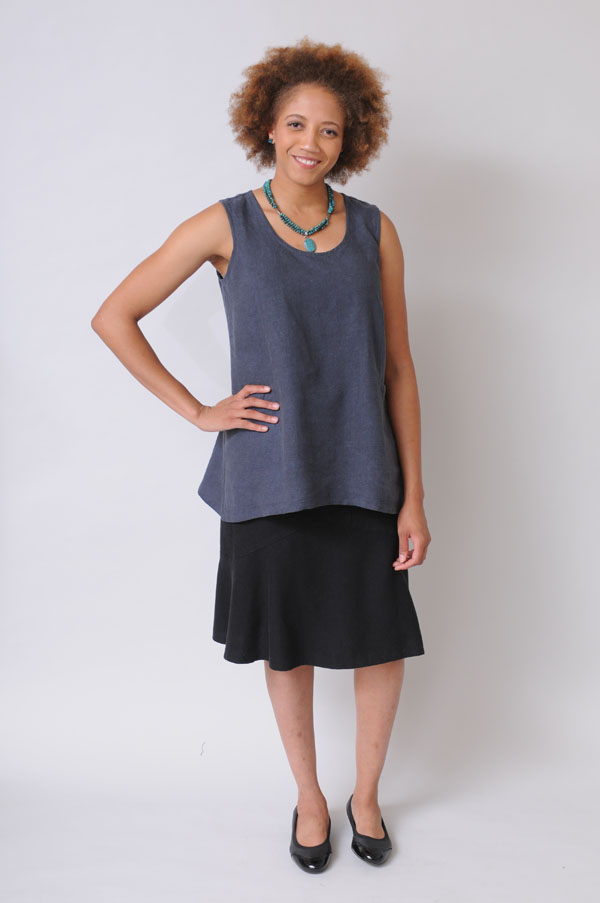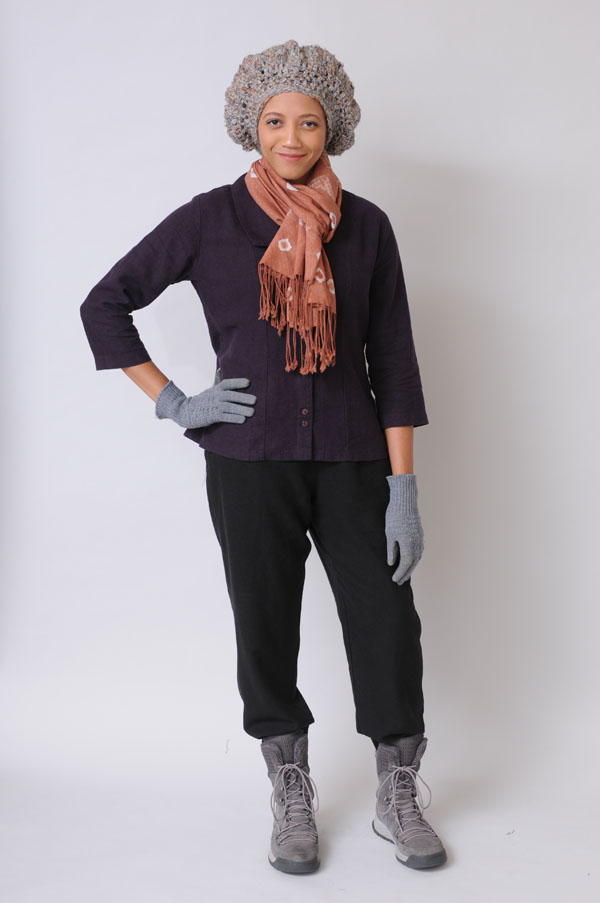7 Reasons Hemp Clothing Is The Future Of Sustainability
Posted by Rose on 9th Oct 2024
Why Is Sustainable Fashion So Important?
In the past 30 years, the conversation about climate change has become more and more urgent. We are also facing crises of a dramatic surplus of waste and unsafe chemicals, resulting in overflowing landfills, and looming shortages of resources, such as fresh water and energy.
Sustainability is a way of life focused not only environmental health and conservation, but the health of people and their communities. The goal of sustainable living is to meet our present needs without compromising the ability of future generations to meet their own needs.
The apparel industry is responsible for more than 5% of all man-made greenhouse gas emissions, not to mention the incredible amount of water, energy, and resources consumed in the production process of fabrics such as polyester, nylon, and rayon. In order to limit global temperatures rising, greenhouse gas emissions need to fall to an astounding ZERO percent by the year 2050, which means we have work to do, especially in the fashion industry.
The sustainable clothing movement has provided a new era of clothing that emphasizes environmental conservation, social responsibility, and economic development. With fewer harsh chemicals, water, and energy used in the growth and production process, sustainable fashion provides an ethical solution to a growing problem.
A Brief History of Hemp Clothing
Hemp clothing has recently been making waves in the apparel industry, but it is hardly a new idea. Cannabis Sativa (the scientific name for hemp) has been used in the production of clothing for thousands of years, dating as far back as 8,000 BC.
Archeologists have discovered remnants of hemp clothing in the Middle East, and the Chinese emperor Shen Nung taught his citizens to cultivate Cannabis Sativa for clothing as early as 2700 BC.
Hemp clothing gets the (temporary) shaft
In 1938, hemp production in the US was outlawed under the Opium and Narcotic Drug Act. Non-psychoactive hemp was included as an outlawed substance as governments around the world attempted to prevent the use of hemp's cousin, marijuana, and other controlled substances.
Attitudes about hemp change once again
During World War II, there was a shortage of traditional fibers, such as silk, nylon, and cotton so regulations around hemp were relaxed. Hemp farming was subsidized and encouraged by the US government in order to provide uniforms, rope, and other products. But, immediately following the war, the ban was reintroduced.
During the 1980s and 1990s, hemp cultivation began being considered as a way to increase jobs in agriculture. Around this same time, a growing selection of hemp textiles from Europe and China also spurred interest in the fiber.
After almost 60 years of prohibition, the US farm bill of 2014 allowed limited research and development. Finally, hemp and all its derivatives became fully legalized in 2018, through the Agricultural Improvement Act of 2018. The Act limited the THC content of hemp to .03 percent—far below the amount needed to produce psychoactive effects.
Developments in hemp fabric and apparel manufacturing are springing up all over the globe. Hemp Foundation, headquartered in India, is taking a multi-pronged approach to hemp promotion. The organization is deeply involved in everything from woven and knit hemp textiles to seed oil, industrial fiber, and wholesale hemp apparel. Women’s empowerment is a core value for Hemp Foundation.
Why Is Hemp Clothing So Important to the Sustainable Fashion Movement?
Not only is hemp less costly to produce and process, it is also much more environmentally friendly than other sustainable options, such as organic cotton and linen. There are a multitude of reasons why hemp clothing is so important, and why it will be undoubtedly be a a significant part of sustainable clothing's future. Here are seven of the most sustainable things about hemp clothes.
1. Environmentally Friendly Production
The hemp plant benefits the environment where it is grown rather than harming it. That's because hemp is one of a handful of crops that replaces up to 70% of the nutrients and resources it takes from the soil.
Hemp is also incredibly hardy, meaning it can grow in a variety of environments without conventional farming methods such as intensive tilling or the use of chemical fertilizers and pesticides. Because the hemp plant is so hardy, it requires less than half as much water as is required by other sustainable clothing crops, such as cotton and flax.
Grown densely for fiber, the hemp plant chokes out weeds. Hemp is also considered a high-biomass crop that will sequester significant amounts of carbon, storing it in the stalks and roots. So, not only is hemp easy on the environment where it grows, it can also benefit the surrounding atmosphere by removing harmful toxins in the air!
2. A Versatile Fiber
Hemp fibers are very versatile, and can be blended with other fibers for lots of different applications in hemp clothing. Hemp is frequently mixed with cotton, linen, and Tencel, giving hemp clothing such as skirts, tops and dresses a softer more free-flowing character.
It can also be blended for more structured items such as blazers and shoes. Adding the hemp fiber to textile blends creates a more durable, sustainable material that will be longer lasting than unblended fabrics.
3. Durable & Weather Resistant
Two of the many amazing properties of hemp fiber are its UV-resistance and antimicrobial qualities. Hemp clothing will hold its color and shape longer than other natural fabrics. Its antimicrobial properties also protect your clothing from moisture and mold during storage, and help keep your clothing smelling fresh. Hemp allows your clothes to go longer between launderings.
4. Breathable & Insulating
Few materials are ideal for all seasons. Hemp clothing is one of the few fabrics that is breathable and fresh in the summertime, but is also insulating during the cold winter months. The unique structure of hemp cellulose fibers makes it a great choice worn alone during warmer months and layered in the winter.
5. Comfortable
One of the wonderful things about hemp material is how well it ages. Because it is weather resistant and durable, the fibers don’t break down as they age, unlike other sustainable counterparts such as organic cotton and flax.
Hemp clothing becomes softer the more it is washed and worn, but retains its integrity and strength. Not only does this keep your clothes looking good longer, it also reduces your annual clothing costs thanks to hemp’s amazing durability!
6. Every Part of the Plant is Used
Every part of the hemp plant can be used in different products. The uses of hemp grown for its fiber go far beyond textiles, and include insulation and automotive applications.
Other hemp varieties are grown for nutritional seed oil and food. Hemp seeds have antioxidant properties and can be taken as a nutritional supplement. The flower, leaves, and roots of certain hemp strains produce CBD used for medicinal purposes.
7. Easy To Grow
Hemp for fiber is extremely hardy. It grows pretty much anywhere quickly, choking out weeds and plants.
With twice the speed of cotton growth, hemp in some climates can be harvested two or more times per season for much more fiber,
Since it grows in any soil, transportation costs and carbon impact is minimized — if and when we develop the infrastructure to process hemp near its source. This not only holds promise for local economies, but also could reduce the overall cost of hemp clothing in the future as the hemp plant itself won’t have to be transported as far to be manufactured into clothing, textiles, oils, and consumables.
Hemp Clothing Is The Future Of Apparel
You’ve probably got a good idea about why sustainable fashion is so important. And, to that end, the reasons for wearing hemp clothing are clear. Between the durability, comfort, versatility, and the benefits to the environment you can’t go wrong adding hemp garments to your wardrobe. Hemp clothing supports environmental conservation, social responsibility, and economic development, while producing beautiful, comfortable, long-lasting fashion.
Share:

